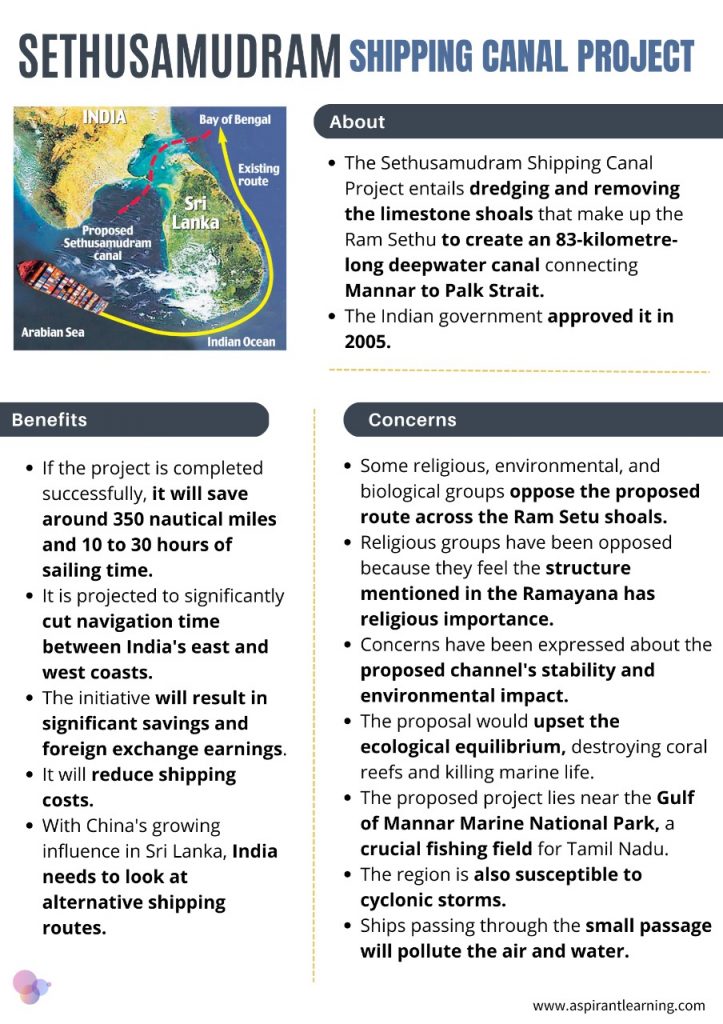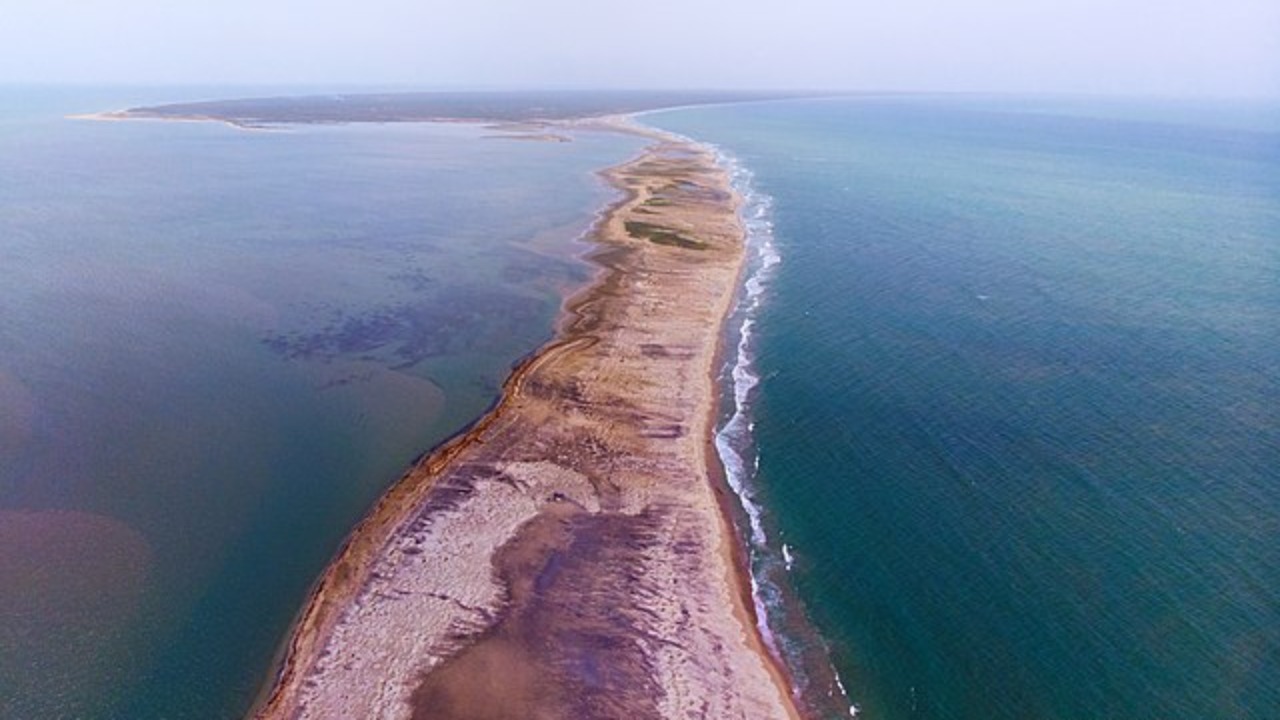News Highlight
Declaration of ‘Ram Setu’ as National Heritage Monument: Supreme Court To Hear Plea On Heritage Status For ‘Ram Setu’ Next Week.
Key Takeaway
- The Supreme Court announced Tuesday that it would hear a petition filed by a Bharatiya Janata Party (BJP) lawmaker asking the Centre to proclaim ‘Ram Setu’ as a national cultural monument next week.
- After Mr Swamy presented the matter before the bench, Chief Justice NV Ramana said it would hear the plea next week, stating the court had kept the matter for hearing on July 26 but was not scheduled for a hearing.
Ram Setu
- About
- Adam’s Bridge is another name for it.
- It is a 48-kilometre-long series of limestone shoals stretching from Rameswaram on India’s southeast coast to Mannar Island on Sri Lanka’s northwest coast.
- In addition, the structure is essential in Hindu and Muslim mythology.
- The bridge (setu) that Lord Ram and his army built to cross to Lanka to fight Ravan.
- According to Islamic folklore, Adam traversed this bridge to reach Adam’s Peak in Sri Lanka, where he repented by standing on one foot for 1,000 years.
- Ram Setu, according to scientists, is a natural structure generated by tectonic movements and sand trapped in corals.
- Significance
- The coral reef platforms in the Gulf of Mannar were designated as a marine biosphere reserve in 1989.
- Subsequently, this area is home to about 36,000 floral and faunal species.
- It is a significant breeding area for fish, crabs, shrimp, and lobsters, among other things.
- 70 of the 600 fish species documented here are commercially important.
- Furthermore, the region is also ideal for turtle nesting.
- The location is also strategically important.
- Even as early as the nineteenth century, the British proposed dredging a channel to allow many ships to navigate between the west and east coasts more easily.
What are the threats?
- The Sethusamudram Ship Waterway Project, launched in 2005, is a contentious proposal to build a channel connecting the Palk Strait and the Gulf of Mannar.
- Additionally, the project aimed to shorten the distance between India’s east and west coasts.
- The region is also susceptible to cyclones, which disrupt the sedimentary dynamics.
- Notably, the 1964 cyclone destroyed the town of Dhanushkodi.
- Given the sensitivity of the nearby terrestrial and marine ecosystems, identifying good locations to dump the SSCP dredged materials could be complex.
- Furthermore, if more ships begin to navigate these waters, there will be an increase in air and water pollution.
- Any accidents in the tight canal, such as a grounded or runaway ship carrying oil or coal, are a formula for environmental disaster.
Geo Heritage Value of Ram Setu
- The heritage paradigm is utilised in nature conservation to maintain the natural diversity of major geological characteristics.
- It recognises that geodiversity, which consists of diverse landforms and characteristics representative of natural dynamical processes, is under threat from human activity and must be protected.
- A country’s natural legacy includes its geological heritage.
- Abiotic elements such as geology, soils, and landforms are also valued for their contributions to supporting biodiversity habitats.

UNESCO World Heritage Sites in India
- About
- A UNESCO World Heritage Site is a location designated by the United Nations Educational, Scientific, and Cultural Organization as having particular cultural or physical significance and being of exceptional worth to humanity.
- UNESCO promotes the worldwide conservation, identification, and preservation of natural and cultural heritage.
- The Convention for the Protection of the World Cultural and Natural Heritage, ratified by UNESCO in 1972, illustrates this.
- How is a World Heritage Site selected?
- Firstly, the nomination of a site by the appropriate government of a country is the first step toward listing.
- The site should have an Outstanding Universal Value (OUV) for the World Heritage candidature.
- There are eleven criteria for determining the Outstanding Universal Value (OUV) for the World Heritage nomination.
- In addition, the proposed nomination must meet at least one of these ten criteria.
- The International Council on Monuments and Sites and the World Conservation Union assess the Nomination File.
- Furthermore, these organisations then offer recommendations to the World Heritage Committee.
- The Committee meets once a year to decide whether or not to inscribe each submitted property on the World Heritage List.
- Furthermore, it sometimes postpones, the decision to obtain further information from the country that nominated the site.
Conclusion
- The Ram Setu is a significant component of India’s cultural, biological, and geographical heritage.
- Furthermore, it cannot be reduced to a mere impediment to more accessible transportation.
- The Ram Setu bears the distinct geological marks of a turbulent past.
- As a result, it must be conserved not just as a national cultural monument but also as a heritage structure as described by science.
Pic Courtesy: Deccan Herald
Content Source: Indian Express



